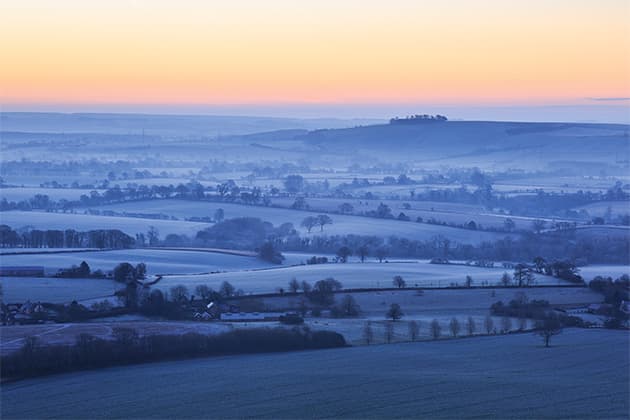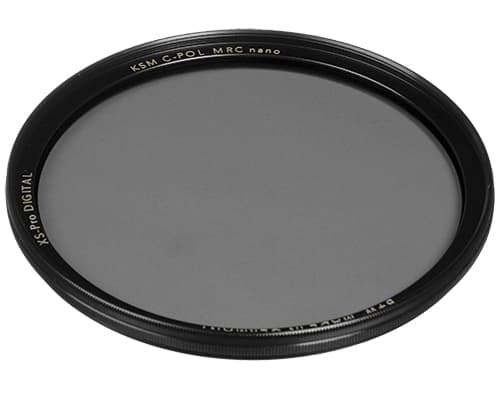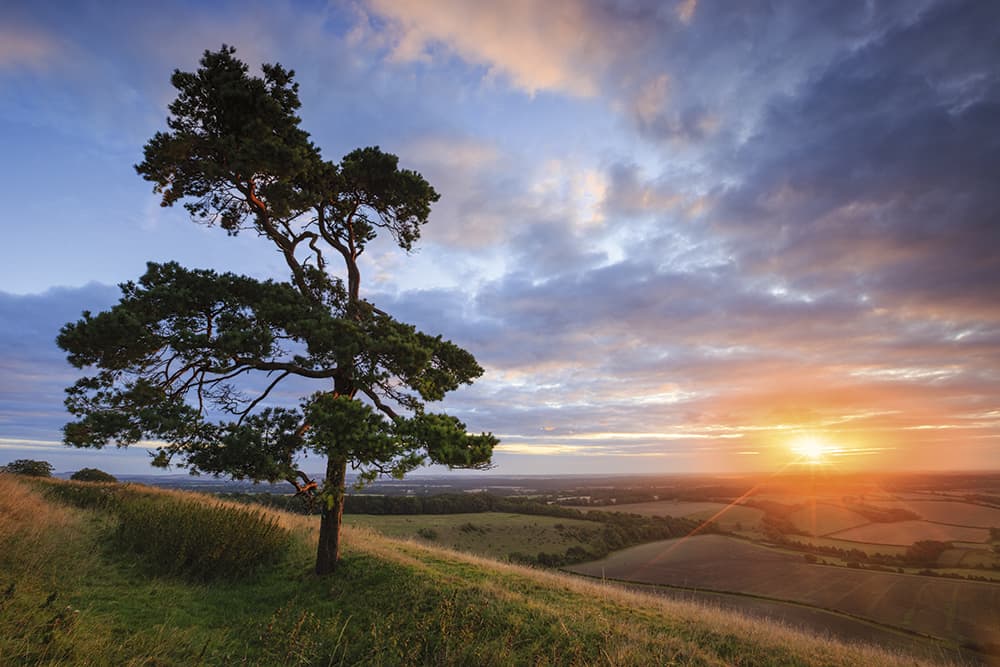
All images by Mark Bauer. A lone pine tree on the top of the hill makes great foreground interest. Canon EOS 5D Mark III, 16-35mm, 1/10sec at f/16, ISO 100, 3EV soft grad
Apart from the obvious hot spots such as Stonehenge and Salisbury Cathedral, the county of Wiltshire doesn’t seem to get much attention from photographers. This is a shame, because it is a beautiful place: a quintessentially English landscape filled with rolling hills, chalk streams and woodland.
One of the county’s hidden gems is Martinsell Hill. At 948ft, it is one of the highest points in Wiltshire and offers a panoramic vista of the Pewsey Vale. With good viewpoints all around, the most photogenic spot is probably on the eastern side, where there are the remains of a Neolithic hill fort. From this spot there are far-reaching views and foreground interest provided in the form of a lone Scots pine and the ridges of ancient earthworks.
Martinsell Hill is just outside Marlborough. From Marlborough, take the A345 towards Pewsey. After a couple of miles, turn left onto an unclassified road signposted towards Wootton Rivers and Clench. About a mile and half down the road, there is a small car park on the right. Park here and follow the well-marked footpath along the ridge of the hill. It’s just a ten-minute walk to the main viewpoints, and as the car park is near the top of the hill there is only a gentle slope to contend with on even ground.
There’s far more to this location than wideangle views, though, as there are plenty of distant details around which to base compositions, such as trees in the rape fields or the tops of hills in the mist.
How to photograph Martinsell Hill
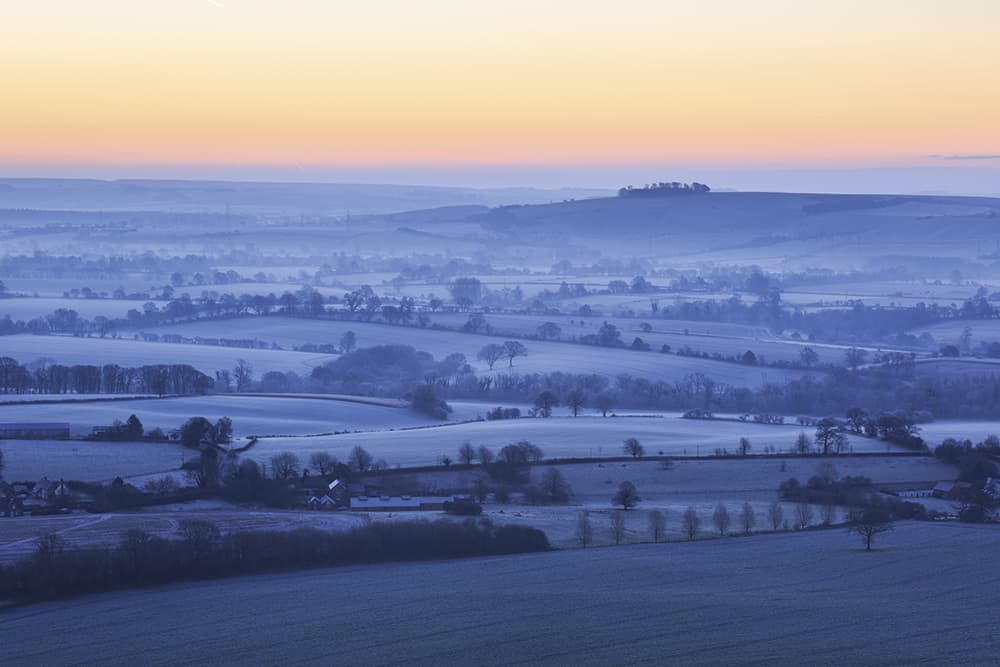
Use longer lenses to pick out patterns in the fields below. This works particularly well when there is a light frost or mist in the valley. Canon EOS 5D Mark III, 70-200mm, 0.5sec at f/11, ISO 100, 2EV hard grad
Best time to visit Martinsell Hill
Martinsell Hill looks good at any time of year, but winter can be great, especially if there is a heavy frost or a dusting of snow on the hills. However, my favourite time is spring, as there are often fields of rape in the Pewsey Vale below, which add splashes of colour to the distant landscape. After a clear, still night, there’s also the possibility of low-lying mist in the valley to add atmosphere to your shots.
Because of this and the angle of sunrise, early morning shoots tend to work out best in the spring. With a wideangle lens it’s possible to capture the rising sun and the lone pine together in the frame. Alternatively, there is a bench overlooking the valley that provides excellent foreground interest for a wideangle shot. Shooting towards the sunrise means there will be high contrast in the scene, so graduated filters are a must. If the tree is foreground interest, use a soft grad if possible so that the transition line doesn’t appear too harsh.
If you have a longer lens, such as a 70-200mm, it’s worth putting it in your kit bag. It’s only a short walk and the weight is worth the extra compositional possibilities.
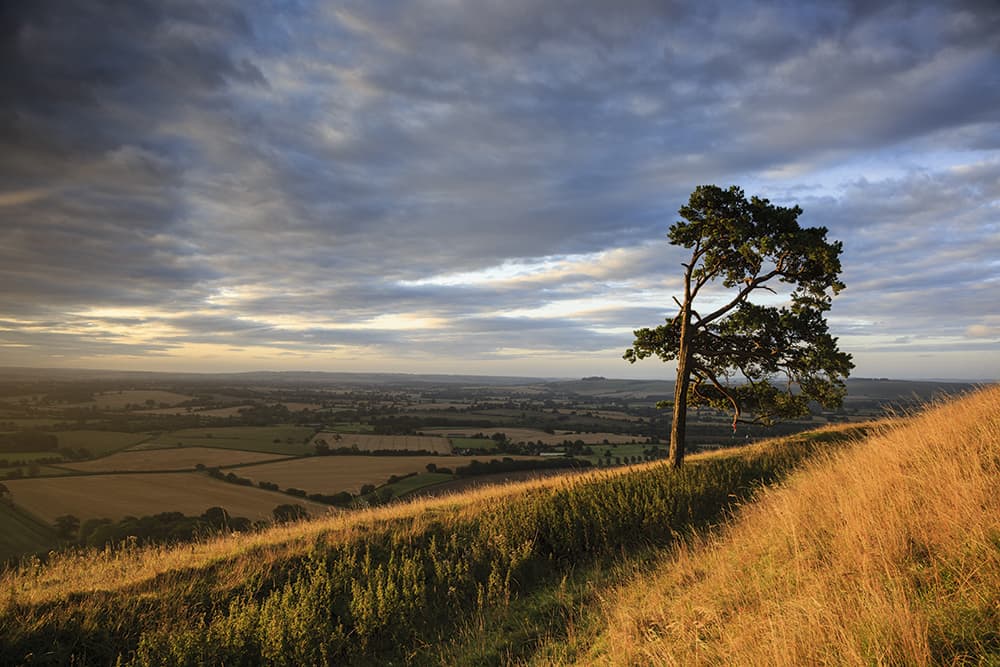
Ridges of the earthworks make superb lead-in lines. Canon EOS 5D Mark III, 24-105mm, 1/13sec at f/11, ISO 100, 2EV soft grad
Where to stay and eat near Martinsell Hill
Just down the road from Martinsell Hill is the charming market town of Marlborough, with numerous cafés, restaurants and pubs. If you fancy a fry-up after a dawn shoot, try Appleby’s in Hughenden Yard just off the high street. If you’re coming from further afield, there are plenty of B&Bs to choose from in the town, or if you’d prefer a hotel the Castle & Ball is centrally located and full of character.
[collection name=”medium”]
Kit list
Lenses
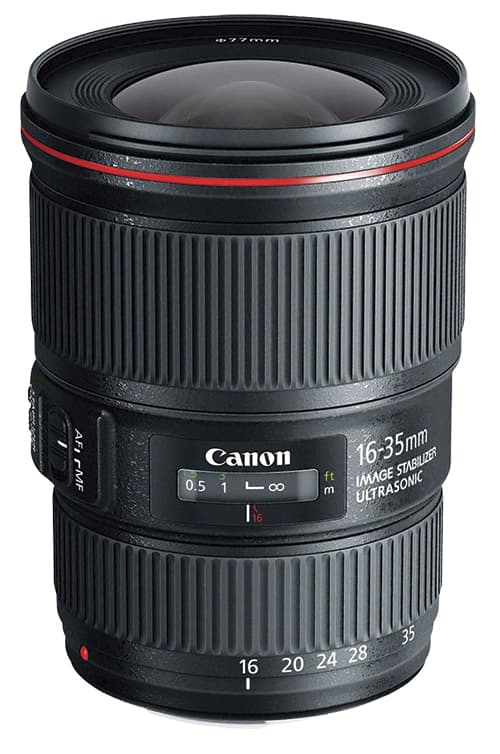
Both wideangle and telephoto lenses are handy – wideangles for making the most of foreground interest and panoramic views, and telephotos for the more distant points of interest.
Graduated filters

Grads will tone down bright skies at sunrise, so you don’t blow the highlights. Use the soft-edged ones if you have foreground interest that breaks the horizon.
Polariser
Polarisers reduce surface glare and restore natural colour saturation, and are essential filters for making the most of the spring colours. Shoot at 90º to the sun for maximum effect.
Mark Bauer has been a full-time landscape photographer for more than ten years. He is based in Dorset and takes his inspiration from the beauty of the surrounding landscapes in the south-west of England. www.markbauerphotography.com

